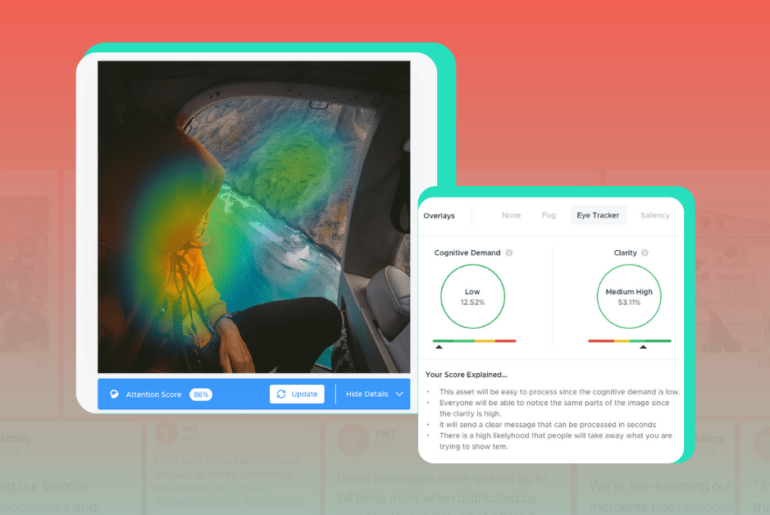Last year we launched our first product called Hypemarks. It was a social bookmarking service aimed at meaningful discovery of links through your friends and people you care about. We were fresh graduates from college and did not know how to scale the product to generate revenue. We were in the “honeymoon phase” of a startup journey. After all, a company’s success depends on the revenue you generate and the value you provide to the customers. But our business model was not sustainable; Hypemarks could only make money if we had millions of users as our primary source of revenue was advertisements. Looking back, it was really sad to know that we had to spend all our efforts in first acquiring users and then figure out a monetization model. As we persisted and did not see any growth in acquiring users, we realized that we needed to change our product vision to a more realistic one that could actually generate revenue. We were in the “pivot phase”. We pivoted our product to Tint (www.tintup.com). We had a product with a business model, but the question was still left unanswered. How to get more customers? Over the past few months we have adopted 9 strategies listed below that helped us get more customers, thereby increasing our revenue by 100-200% month over month.
1) Product:
Finding out the right product is the key to a successful business. Eric Rees in this article clearly explains how to figure out the right product market fit before you scale your product. This is the exact same principle we applied for Tint. Instead of asking our friends or families for customer feedback, we asked our customers directly. Initially we thought that people would be making Tint as their primary website but we soon realized that it was a false assumption. So taking the customer feedback into account we made a simple and flexible embed. People loved the embed so much that they were ready to pay for it in the first week of our launch. At this stage we had the right product ready to take off. Now the question is to find customers. Where are our customers?
2) Partnerships:
A product is a failed one if you cannot put it in your customers hands. Partnerships are the quickest way to grow your business. We reached out to a number of website builders to help us grow. We integrated our product with them and this helped us get more customers. It was a win win for both of us. This helped us get more exposure and helped us quickly validate our idea. Looking back, we would have been less confident of our product had it not been for our partnership distributions. We eventually ended up as the number #1 app on their app store which is a huge validation for a startup. Eventually people started to blog about us, which resulted in a higher Google search ranking. This brings me to the next topic. Why is SEO really important?
3) SEO:
Even though we had been getting customers through partnerships, we did not want to depend on them to grow our company. Partnerships are a great way to start, but it’s not sustainable to depend on someone else. So after sifting through thousands of blog articles on the web, we realized the true power of SEO. Its the most underrated and the most easiest way to drive traffic. SEO definitely helped us by
1) Acquiring more customers
2) Lowered the cost of acquisition of a customer from $40 per customer to $0 per customer.
You can read more about how we increased out SEO by 2600% here.
4) Guest Blogging:
Guest blogging helps you generate high quality leads to your business or website. It also helps you with high quality inbound links that results in a higher SEO. Bufferapp has written a insightful article on how they acquired 100,000 users using guest blogging here. This is the strategy we recently adopted at Tint. To start, reach out to blogs with high traffic and ask them if you can contribute to their blog with great content you wrote. Start small, build legitmacy, and expand from there.
5) Press:
Reach out to top blogs to write about your product. Be persistent, and always pitch from a perspective that will help their readers learn something useful. Don’t use a PR firm to do the job for you. We relied heavily on press for our first product. Once we ran out of resources, we slowly started to see traffic dying down. So, for our second product we used press as a medium to quickly build legitimacy when selling to big brands. Our assumption worked. We landed some of our biggest clients through the press. The lesson we learnt here is to use press to gain credibility and quickly validate your product, instead of relying on it for your user growth. Recently we got a premium customer through a google search with the keywords “social feed aggregation website“. The image below shows you some sample results.
You can see that the Techcrunch articles gave us the credibility and a higher SEO ranking for those keywords. So use press for the right reasons.
A few press articles about us :
1) Techcrunch
2) Twit TV
3) Makeuseof
6) Content Marketing:
Content marketing has a rich history that extends far before the Internet. Started in the early 20th century, the Michelin Guides are one outstanding example of how far the content marketing concept can be taken, and demonstrates that great content marketing is neither spammy nor salesy. Michelin, a small French tire company, needed to get more people in cars and on the roads, so they started producing restaurant review guides. Their guides cultivated such a strong culinary following, that people started to flock to restaurants based on the guide’s rankings. Eventually, the guides helped build the reputation of Michelin’s global brand for what it is today. If one lesson can be learned from Michelin, it’s this: Solve a problem for your customers or target audience.
Write posts that serve your audience. Read more about here.
7) Customer Feedback:
We adopt a customer centric approach to guide our product development. We build features that our customers ask for and are willing to pay for. Being a startup we have an unfair advantage of releasing features quickly and iterating our product on the feedback given by our customers. We use tools like Qualaroo and UserVoice to gather customer feedback. In the past few months customer feedback has helped us in:
1) Choosing the right pricing for the product
2) Feature development
3) Identifying our target customers
Here in the above image, you can clearly see users complaining about our pricing plan. We went ahead and changed the pricing which helped us get more customers. If not for the feedback we would have lost a lot of potential customers.
8) Olark:
Olark is a simple widget that can be placed in your site to start a conversation with the visitors. We observed that people love the live chat support more than email/phone call support. Live chat also keeps your customers on the site which is an added bonus. Overall, Olark helped us in converting visitors into customers.
9) A/B testing:
We heavily rely on A/B testing to guide our product development. Instead of tinkering over what might work, we run a test and let the customers decide what is right for us. There are many tools like Optimizely, Mix Panel and Google Analytics that can help you A/B test various features. We use Google Analytics for A/B testing. Some of the metrics we A/B test are :
a) Landing page conversions: To measure how many visitors convert to users when exposed to different landing pages.
b) Pricing plan conversion: To find out how many free users turn into customers with different pricing plans.
To give an example, recently we wanted the customers to try out the trial version of the product. Instead of building it, we employed the following approach:
a) Release a trial plan button on our pricing page to see how many people click on the button
b) A form to collect email ids of the users interested in the trial version.
Just after two days we had 40-50 people requesting the trail version. We went ahead and built the trail version. As a result we saw an increase in a 10%number of customers.
—
These 9 strategies helped us to get 700 paying customers and 10,000 free users over the course of 3 months.




